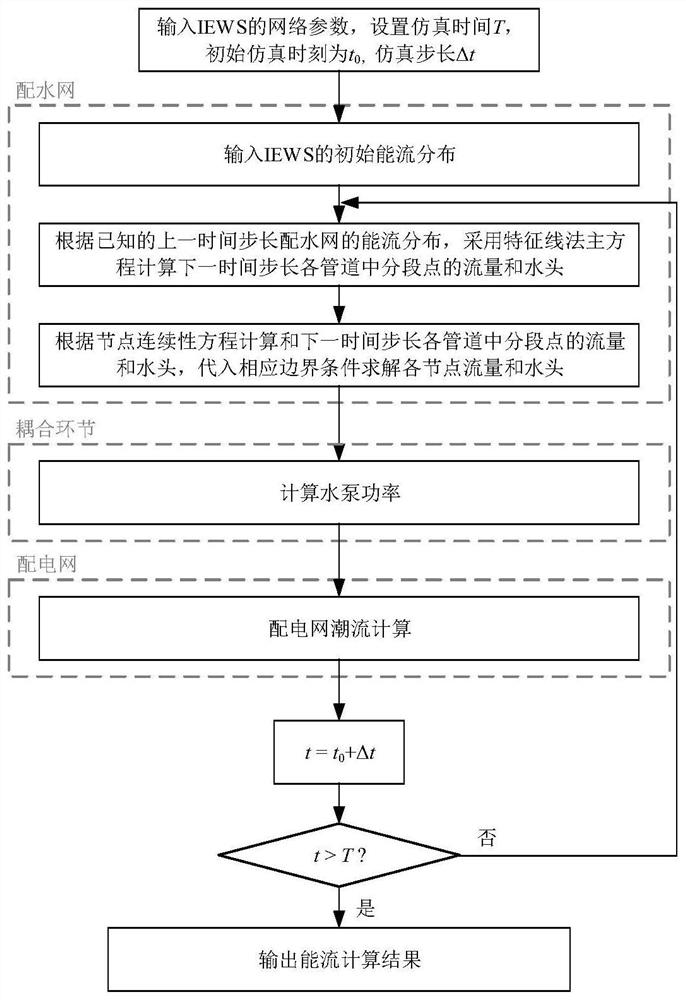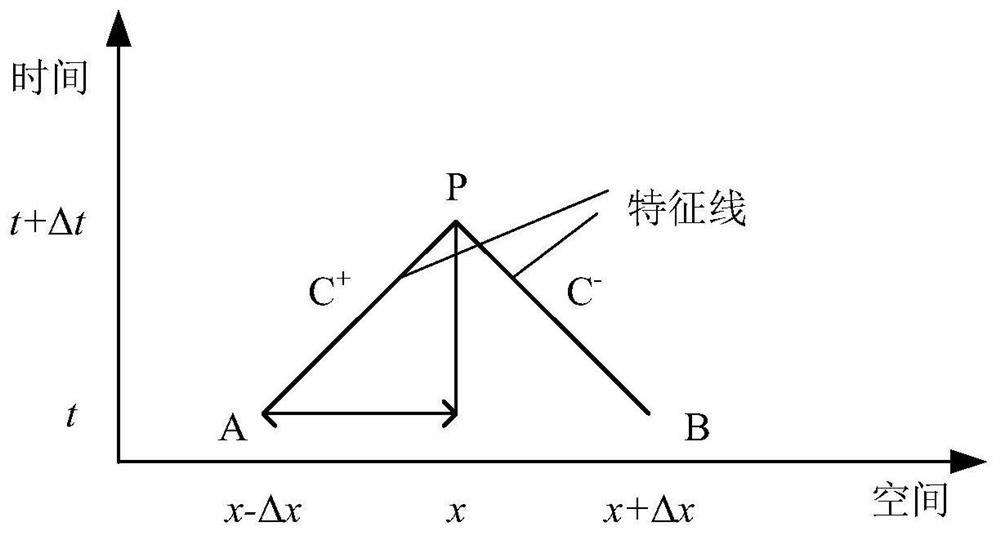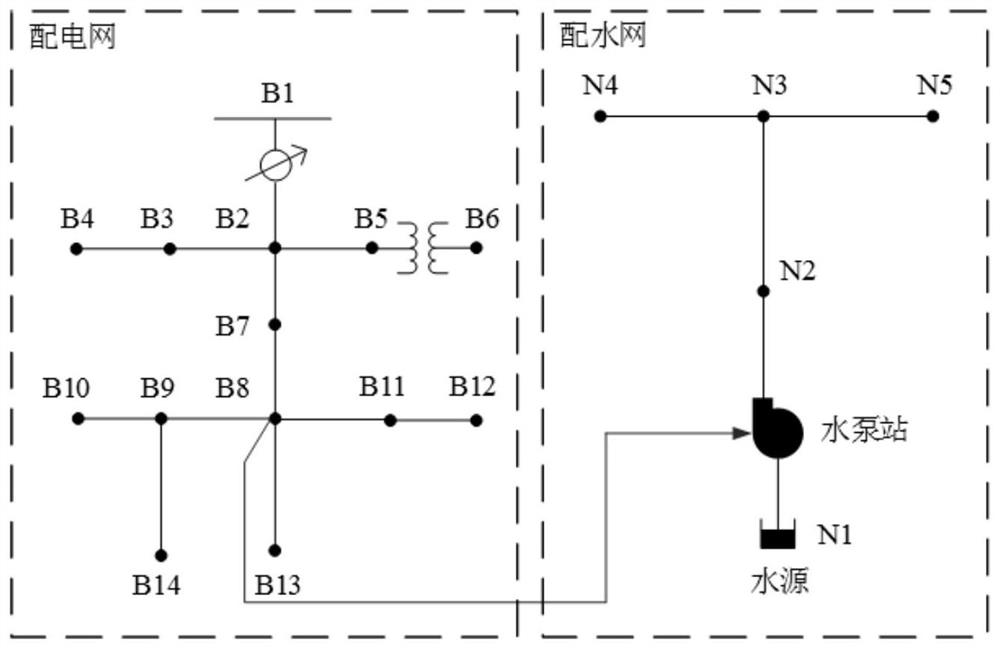Quasi-steady-state energy flow analysis method of electricity-water comprehensive energy system
A technology of integrated energy system and analysis method, which is applied in the field of quasi-steady-state energy flow analysis of electricity-water integrated energy system, and can solve problems such as difficult description and slow change of water flow
- Summary
- Abstract
- Description
- Claims
- Application Information
AI Technical Summary
Problems solved by technology
Method used
Image
Examples
Embodiment 1
[0083] see Figure 1 to Figure 11 , a quasi-steady-state energy flow analysis method for an electricity-water integrated energy system, comprising the following steps:
[0084] 1) Obtain the network structure parameters of the Electric-Water Integrated Energy System (IEWS), and set the pipeline branch segment points as I, the pipeline segment step size Δx, the time step size as Δt, and the simulation time as T. The segment nodes include upstream and downstream end nodes.
[0085] The pipeline segmentation step size Δx and the time step size Δt satisfy the following relationship:
[0086]
[0087] In the formula, c is the wave velocity of water hammer.
[0088] 2) Obtain the initial steady-state energy flow of the electricity-water integrated energy system, that is, the energy flow distribution of the water distribution network and the power flow distribution of the distribution network at time t=0.
[0089] 3) Using the characteristic line method to calculate the transie...
Embodiment 2
[0149] An IEWS quasi-steady-state energy flow analysis method considering the transient characteristics of the water transmission and distribution system, the steps are as follows:
[0150] 1) Input the network structure parameters of IEWS, set the pipeline branch segment points to 3 (including the upstream and downstream end nodes), the water hammer wave velocity to 1000m / s, the pipeline segment step to 1000m, and the simulation time step to 1s. The simulation time is 120s.
[0151] In order to ensure the accuracy of the solution, Δt and Δx must satisfy the following Courant condition time-space step relationship:
[0152]
[0153] 2) Input the energy flow distribution of the water distribution network and the power flow distribution of the distribution network when t=0.
[0154] 3) Based on the known energy flow distribution of the water distribution network in the previous period, the transient energy flow of the water distribution network in the next simulation step is...
Embodiment 3
[0203] See attached image 3 , using a test IEWS composed of IEEE-13 distribution network and improved 5-node water distribution network to illustrate the effectiveness of the method proposed in Example 1, the steps are as follows:
[0204] 1) Obtain distribution network data: Letters B and N represent the distribution network bus and distribution network nodes respectively, and the water pumps of the distribution network are connected to the distribution network bus B8. The detailed data of the distribution network are shown in Table 1 and Table 2 :
[0205] Table 1 Water distribution network node data
[0206] Node ID node type Elevation (m) Water load (m 3 / s)
N1 (water source) source of water 0 - N2 end node 0 0 N3 end node 5 0.22 N4 end node 5 0.22 N5 end node 5 0.22
[0207] Table 2 Branch data of water distribution network
[0208]
[0209] 2) Experiment:
[0210] to attach image 3 The test IEWS c...
PUM
 Login to View More
Login to View More Abstract
Description
Claims
Application Information
 Login to View More
Login to View More - R&D
- Intellectual Property
- Life Sciences
- Materials
- Tech Scout
- Unparalleled Data Quality
- Higher Quality Content
- 60% Fewer Hallucinations
Browse by: Latest US Patents, China's latest patents, Technical Efficacy Thesaurus, Application Domain, Technology Topic, Popular Technical Reports.
© 2025 PatSnap. All rights reserved.Legal|Privacy policy|Modern Slavery Act Transparency Statement|Sitemap|About US| Contact US: help@patsnap.com



